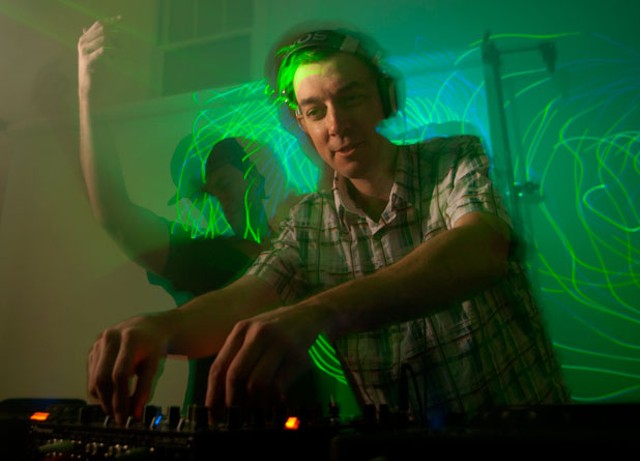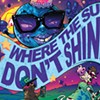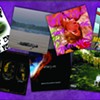Published November 23, 2011 at 12:00 p.m.
As long as electronic dance music has existed, Burlington has had its vibrant share. But in the past, it was typically a small share, with the genre’s venues confined to underground raves, niche nightclubs, such as the now-defunct 135 Pearl and the occasional larger dance party at Club Metronome or Higher Ground.
Suddenly, electronic dance music, or EDM, is ubiquitous in Burlington. While a local indie-rock or jazz fan may search in vain for suitable auditory options on, say, a Tuesday night in the dead of winter, EDM fans suffer no such shortages. Virtually seven nights a week, the propulsive, bass-heavy strains of all manner of club music styles — and substyles, and sub-substyles — can be heard rumbling from sound systems all over the city. Not to mention from the bumper-rattling subwoofers of innumerable car stereos.
So, why now?
In part, the local rise of EDM reflects a larger national trend and, specifically, the inroads electronic music has made into popular culture. From the Black Eyed Peas’ will.i.am to Coldplay, Top 40 radio is currently dominated by pop musicians who are adopting — and adapting — electronic music to create their hits. In particular, house music, the best known of the countless iterations of EDM, is becoming mainstream. Even pop star Britney Spears is getting in on the EDM action. Her recent single “Hold It Against Me” is essentially a hypercommercialized take on dubstep — a controversial, bass-heavy genre viewed as both a scourge and savior of EDM. (More on that later.)
But EDM’s takeover in Burlington is surprising, even to those most familiar with the music and scene. Craig Mitchell, 40, has been DJing here and in Boston and New York City for more than two decades and is universally regarded as the godfather of Burlington house music. He agrees that, while electronic dance music has always been warmly received in Burlington, now it’s downright pervasive.
“It’s not just underground anymore,” Mitchell says. “You hear it at clubs and college bars, parties. It’s everywhere.”
To be sure, there are more individual EDM DJs working in the Queen City than ever before. But it’s the small community of interconnected DJ collectives and crews that has diversified the music and energized and educated its audiences, driving the trend.
“Now you have all these crews that can partner with clubs to bring in bigger acts and can do their own promotion,” says Mitchell. “And they have their own fan bases, which clubs want to capitalize on.”
DJ crews are not a new phenomenon in Burlington. Mitchell says that, because of Burlington’s insularity and the specific niche EDM has long occupied here, DJs often collaborated with like-minded colleagues to find strength in numbers. But he notes that the current generation of EDM crews arrives amid a perfect storm of factors encouraging the rise of the genre.
Chief among them is technology. It sounds obvious, but electronic dance music is, first and foremost, electronic. Those snappy, repetitive drum lines in house music or the oozing, subconscious-rattling bass of dubstep aren’t played, per se. They are programmed, often through MIDI-based sequencers and other electro gadgets. That technology is all relatively new, much of it dating to the late 1970s. House music itself, the grandfather of most modern EDM styles, first arrived in Chicago in the early 1980s.
EDM is a relative infant, culturally speaking, and its development relies on technological advancements. Thanks to a new generation of programming tools and DJing software such as Ableton Live and Serato Scratch Live, EDM technology has never been as sophisticated, accessible or user-friendly as it is today.
That ease of access and use has translated into an EDM boom. Technically, DJs don’t even have to know how to, well, DJ anymore — at least not in the traditional sense. Software programs can match beats and sequence tracks at the push of a button. All a wannabe DJ has to do is decide what to play.
That’s an important role, certainly. Mitchell notes that guiding a throng of dancers through a sweaty set of drum and bass or moombahton (another subgenre) is job one. But technology pushes the trend. Though purists may object, those innovations, combined with the explosion of social media and increasing pop-culture acceptance, make this a particularly fertile time for EDM and the collectives shaping electronic dance music in Burlington.
“It’s a brave new world,” says Mitchell.
Well, hello there
Tomie Marosy, 24, says he had his first taste of EDM while attending school in Montréal. He got hooked through parties thrown by Montréal DJ crews such as Peer Pressure, Kops Crew and I Love Neon. But when he came home to Burlington, Marosy could never find anything that matched the size or energy of Montréal shows — such as Megasoid’s first “Bridge Burner” party, held in an abandoned lot underneath an overpass in Mile End; or Diplo and Chromeo playing in an empty swimming pool.
So in 2007, Marosy formed Bonjour-Hi! with fellow DJ Travis Higgins. The two started throwing dance parties at clubs in Burlington.
“I wouldn’t say that we set out to copy the type of parties they were throwing [in Montréal],” says Marosy, aka DJ Toma. “But they definitely did help influence our taste and expose us to what a successful party should look like.”
“Montréal was probably the biggest influence on me getting into dance music,” agrees Higgins, 23, aka DJ Travmatic. “Burlington definitely didn’t have the dance scene it does now. But keep in mind we were also too young to really go out in the States at this point.”
Travel to and from Montréal also generated the group’s cute moniker. With Higgins in Burlington and Marosy in Canada, the two frequently crossed the border, where guards would meet them with a familiar bilingual greeting: “Bonjour. Hi.”
Marosy now lives in San Francisco and Higgins in New York City. But Bonjour-Hi! has continued performing in area clubs with a second generation of DJs, including Allie Pacelli (DJ Treatz), Ryan Brennan (Vidi Vici) and Stefan Echo (Echonomic), all of whom joined the crew in 2008.
With so many different DJs, a typical Bonjour-Hi! set is, well, anything but typical. Its members often perform as one, swapping turntable duties and mixes on the fly. And, while they comprise a self-described “house music” collective, Bonjour-Hi! draws from a variety of genres, not just EDM styles. The group’s overarching musical philosophy is to filter underground and vintage dance music through a prism of modern house beats.
“When I started DJing with these guys, I had never heard any music like it before,” says Pacelli. “And I never heard anyone in Burlington playing music like that.”
“We started DJing really just trying to bring something new to Burlington,” adds Higgins.
“I think the one thing we really strived for is to keep things new,” says Marosy. “Whether it’s making sure we keep our DJ sets diverse each night or inflating a six-foot blow-up pig on the dance floor at 2 a.m., we just want to keep it live.”
The science of sound
If Bonjour-Hi! are the cool kids among Burlington’s EDM devotees, then Mushpost is their geeky little brother. Helmed by Nick Concklin, 24, the collective began in 2008 as a radio program called “Mushroom Compost” at the University of Vermont’s WRUV 90.1 FM. Today, Mushpost contributes to dance parties in local clubs what its members call an “omnistep” take on intelligent dance music (IDM), itself an EDM offshoot. Its fans would find little resemblance to Concklin’s old radio show in the music he plays now — but the links are there.
“We never insisted that people had to be high to listen to us,” jokes Concklin, who initially shared the WRUV show with Mike Labita. “But it wasn’t a typical radio program.”
Mixing CDs, MP3s and records, Concklin and Labita took a distinctly experimental approach to college-radio DJing. An average show might include a heady mix of spoken word, “Sesame Street” songs, custom sounds and anything else they could get their hands on.
“It just became a two-hour amalgamation of sound,” Concklin explains. “It was like putting together a puzzle.”
Driven by intellectual curiosity — and the near-impossibility of accurately mixing tracks while adjusting for iTunes delay — Concklin began teaching himself to use Ableton, a software music-sequencer popular in EDM DJ circles. He soon delved into bass music and, after Labita left the radio show, began honing his chops along with fellow WRUV DJ John McMillin (Sycofont), 24. The new duo shortened its moniker to Mushpost and decided to take the act out of the studio and into the clubs. Mushpost’s first show, in 2009 at Club Metronome, was at “Bass Culture” — a Tuesday-night dubstep residency hosted by veteran area DJs Jahson and Nickel B.
“We realized that we should be going to ‘Bass Culture’ and supporting it,” says Concklin. “At the time, dubstep was very experimental, and it was a small community. But it was the future.”
Concklin’s DJ name, the Orator, is an apt one. Dude is a walking encyclopedia of EDM history. Ask him for his take on any of the genre’s bazillion offshoots, and he can tell you where and when it started, what its roots are, and even the social climate under which it emerged. That hyperintellectual approach to music sets Mushpost apart. The collective, which now has a rotating cast of DJs, has a stated mission to act as “cultural ambassadors,” cultivating “forward-thinking, bass-driven transnational music.” In other words, making music that shakes minds and asses.
“The struggle with IDM is that you can’t really dance to it,” says Concklin. IDM is less beholden to particular sonic characteristics than are other EDM styles, being based more in technological experimentation than in danceable grooves. Concklin compares it to another style of high-minded geek music: prog rock. “The focus is on how complex and academic you can get with rhythms and time signatures,” he says. “It’s taking disparate forms of music and trying to make a cohesive fusion, and in doing so [to] make a new expression.”
Concklin says he was initially drawn to dubstep in particular because he felt the genre’s spatial elements and use of subbass frequencies embodied progressive aspects of IDM while presenting them in a danceable way.
“What was interesting about dubstep is that it was dance music, but taking these really intricate rhythms from post-house and shuffling them with rhythms from different cultures,” he explains, noting the lineage of dubstep from reggae in particular. “It was something you could physically feel and hear at the same time. It was asking how far we could push the science of sound.”
Shot by Nicholas Galante and Eric Sorenson.
Step on it
Ask a room full of DJs what they think about dubstep, and you may incite a small riot. The genre, which first appeared in the UK in the late 1990s, has recently experienced a global renaissance and become a deeply divisive topic in EDM circles — even among members of the same DJ crews. In short, you either love it or hate it. But most local DJs seem to agree that dubstep is fueling the latest burst of EDM in Burlington and beyond.
The local champions of dubstep are 2K Deep. The five-member DJ collective has been hosting parties and promoting big-name EDM acts in Burlington since 2004, from underground raves to club gigs. Most recently, they were responsible for two sold-out shows, one featuring dubstep and house act Nero at Burlington's Memorial Auditorium; the other featuring Flux Pavilion and Doctor P at Higher Ground. But even 2K’s DJs diverge on dubstep.
Adrian Sackheim (DJ Haitian), 26, takes a diplomatic view. While he admits that dubstep and brostep may not be the music he prefers to listen to, it’s what his audiences want to hear.
“It’s huge right now, especially with younger crowds,” Sackheim says. He adds that he sees an opportunity to use dubstep as a way to introduce young audiences to other elements of EDM.
“If we book some big act and then open for them, we can sneak some more underground styles into our set,” he says. “It’s kind of a bait and switch, but it’s great when the crowd realizes they might like this other stuff, too.”
“That’s the winning formula,” says Dave Leikin (Sleezy D), 25. “You do what you’ve got to do to get them to listen. But hopefully you can turn them on to something else cool as well.”
Craig Mitchell says he was initially confused by dubstep. He didn’t get it. But he concedes that it’s “a gateway drug” into EDM. “People who weren’t into house music two years ago have all of a sudden started going to these big shows,” he says. “That’s not a bad thing.”
Leikin of 2K Deep notes that, before 2009, dubstep was a different-sounding genre than it is now.
“It was more spacious,” he says. “You still had hard-hitting snares and subbass, but with more space to breathe. Now what is coming out is very aggressive, and that’s created a division between people who are just now discovering dubstep and people who have been listening to it for a long time.”
At the heart of the conflict is a perception in certain corners that dubstep has devolved from an artistically provocative form of EDM into a watered-down and commercially pandering style. The most extreme mutation is brostep, which takes dubstep’s dark, brooding, atmospheric aesthetic and infuses it with a belligerent, testosterone-fueled energy and, in egregious cases, adds blatantly misogynistic lyrics.
“I think some younger people get down on older dubstep, and vice versa,” says 2K’s Shahriyar Sherkat (DJ Sharkat), 36. “But when they get jaded on the aggression in new dubstep and brostep, [younger fans] might come around on it.”
“There’s no set path,” interjects Sackheim. “Music is subjective. We don’t know that because some kid likes midrange dubstep now that he’ll like deep house one day. It’s whatever is good for you, whatever makes you happy. Dubstep is controversial, but it’s also accessible. Really, I think people just need to lighten up.”
All together now
If Craig Mitchell is the godfather of Burlington house music, Nexus Artist Management may be its extended Corleone family. The booking and promotions company run by Justin Remillard (Justin R.E.M.), 36, and DJ Chris Pattison, 37, has been a pillar of Burlington’s EDM scene since 2003 — though their individual roots in local EDM go back several years farther. The two have been responsible for bringing some of electronic music’s biggest stars and most influential artists through Vermont. As its name suggests, Nexus stands at the core of local EDM — the point where much of the scene comes together.
Pattison and Remillard have seen the popularity of EDM in Burlington ebb and flow over the years. Asked about this latest swell, they point to a convergence of opportunity, driven by the rise of social media, which have enabled artists to connect directly with their fans — particularly young ones — in ways they couldn’t before.
“It’s revolutionized everything,” Pattison says of social media, such as Facebook and Twitter. “You can get the word out about something in seconds. Mark Zuckerberg is our overlord now.”
The ease with which the internet makes music accessible has also changed the role of EDM producers and DJs. With more music available at the click of a mouse than any one person can digest, the role of DJs as curators and tastemakers has grown crucial.
“There are literally thousands of electronic music tracks released every day,” declares Remillard. “So your reputation as a company is based on history, finding producers who continue to make dope sounds, are still developing, and then usually giving that music away.”
Remillard points out that most EDM artists don’t make money selling their music. They make money at shows. So offering a track or two for free and exposing new audiences to the sound generally shows up as a positive gain at the gate.
“You have to be able to adapt to the changing times,” Remillard says. He would know. Nexus was at one point the largest break beat booking agency in North America. But when break beat suddenly fell out of vogue in the mid-2000s, he didn’t change his focus, and the company suffered. This year, Nexus is rolling out a new business model in hopes of regaining momentum. Aligning with collectives such as 2K Deep has helped the company maintain relevance while keeping an eye on the future.
“Music comes and goes,” says Remillard. “From house and techno to dubstep to indie rock or whatever … there is great music in Burlington, and there always has been, and I think there always will be.”
And the beat goes on.
More By This Author
About the Artist

Matthew Thorsen
Bio:
Matthew Thorsen was a photographer for Seven Days 1995-2018. Read all about his life and work here.
Matthew Thorsen was a photographer for Seven Days 1995-2018. Read all about his life and work here.
Speaking of Music
-

Two Local Band Directors March in the Macy's Parade
Nov 22, 2023 -

Before a Burlington Show, the Wood Brothers Get Back to Basics
Oct 26, 2023 -

After a Half-Century of Leading Local Ensembles, Steven and Kathy Light Prepare a Musical Farewell
May 3, 2023 -

Double E 2023 Summer Concert Series Kicks Off With the Wailers
Mar 17, 2023 -

UVM’s New School of the Arts Gathers Many Creative Disciplines Under One Roof
Sep 14, 2022 - More »
Comments
Comments are closed.
From 2014-2020, Seven Days allowed readers to comment on all stories posted on our website. While we've appreciated the suggestions and insights, right now Seven Days is prioritizing our core mission — producing high-quality, responsible local journalism — over moderating online debates between readers.
To criticize, correct or praise our reporting, please send us a letter to the editor or send us a tip. We’ll check it out and report the results.
Online comments may return when we have better tech tools for managing them. Thanks for reading.















































